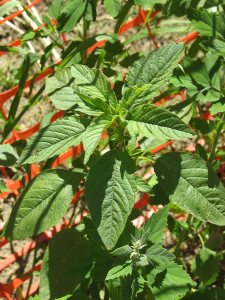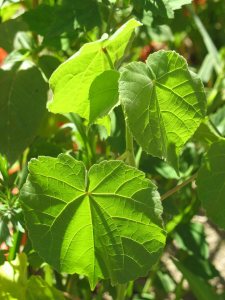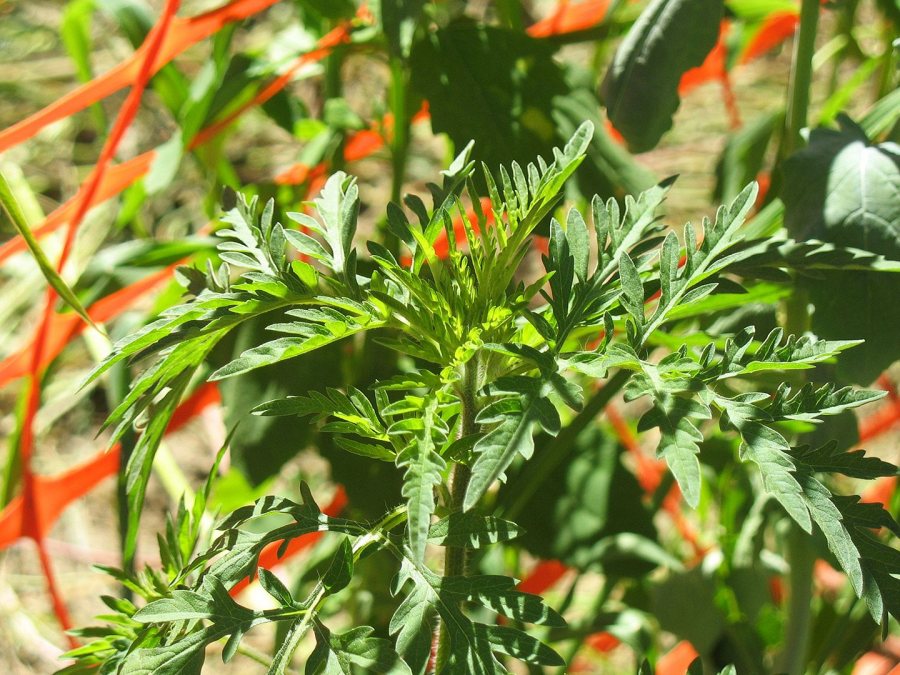
Campus Construction Update: So which one’s the pigweed again?
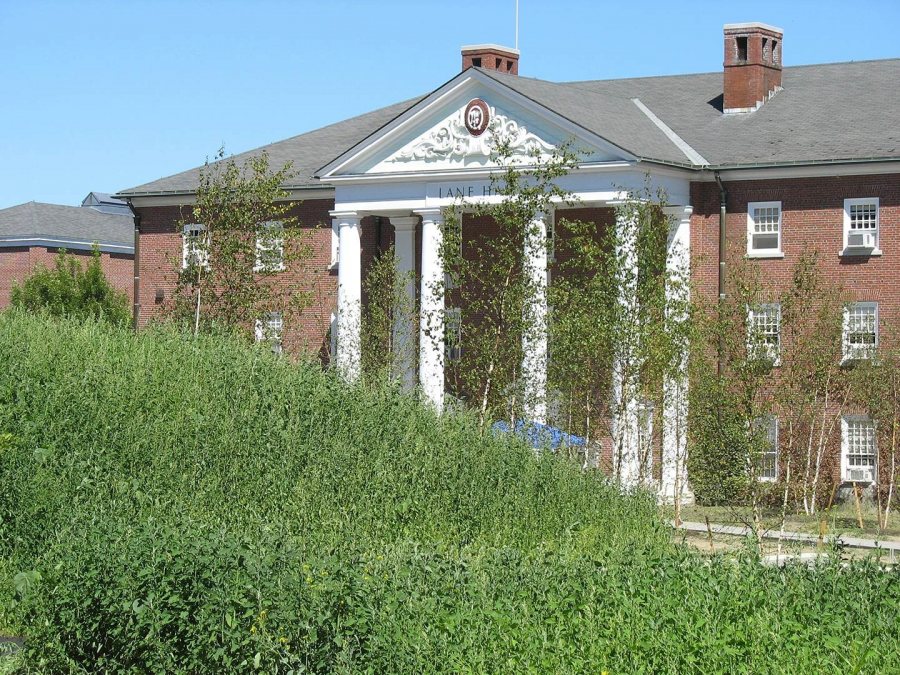
Landscape plantings couldn’t be done on Alumni Walk till new loam was spread, and the loam had to wait until the paving was done. Net result, shown on Aug. 28, 2008: a fine crop of weeds. (Doug Hubley/Bates College)
Even as workers were whacking down and pulling up the green shag carpet of Alumni Walk weeds, Susan Hayward joined Campus Construction Update at the site on Aug. 27 to identify the plants that had volunteered so eagerly this summer.
Hayward is an amateur botanist, a professional environmental educator and president of the Stanton Bird Club.
A few species by far dominated the crop: lamb’s quarters, field mustard and green amaranth. (Both green amaranth and lamb’s quarters are often called pigweed.)
All three can be eaten — although nitrates accumulate in amaranth leaves, so you’d want to limit yourself to a few young leaves in your salad. Or forget it altogether.
You’ve likely seen lamb’s quarters, an intrepid and prolific plant with pointy leaves that are green on top and whitish on the bottom. It was by far the most profuse weed on Alumni Walk.
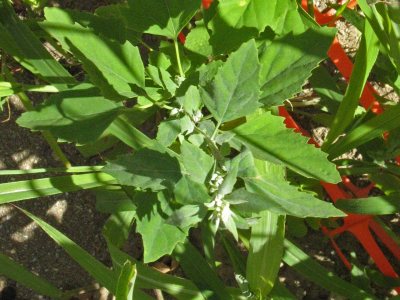
“Commons could cook this up and feed the whole campus,” said plant expert Susan Hayward, indicating the masses of lamb’s quarters on Alumni Walk. (Doug Hubley/Bates College)
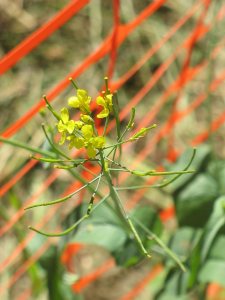
A field-mustard blossom. The greens are nutritious and deliciously bitter-spicy. (Doug Hubley/Bates College)
“Commons could cook this up and feed the whole campus,” Hayward said, indicating the masses of lamb’s quarters. In fact, the plant was first brought to this country from Europe as a pot herb, and its flavor resembles that of spinach.
But, like pigweed, lamb’s quarters can concentrate undesirable substances, and moderation is recommended.
The seeds that become your hot dog topping come from black mustard, a relative of field mustard. But field mustard greens are nutritious and have a delicious bitter-spicy taste. (Another relative, the tasty broccoli rabe, turns up in grocery stores in the spring — delicious sautéed with olive oil, garlic, ground chile pepper and a little broth, and served with pasta. Shrimp optional.)
Hayward pointed out other specimens whose value was more decorative than culinary. Lady’s thumb has long, pointed leaves sporting irregular purple blotches, which raises the question of what exactly the lady was doing with her thumbs.
The best-looking weed, though, was velvet-leaf, whose rounded, heart-shaped leaves really did feel like velvet. It’s also known as Indian mallow — it comes from India — and pie-maker, because the seed cases look like pie crusts.
“I keep a life list of plants I have ever seen,” Hayward said, “and velvet-leaf is a new one for me.”
A weed is a weed, of course, only if you don’t like it, and we like most plants. Our tour turned up only a couple specimens that we were glad to tell goodbye. Everyone’s good friend, crabgrass, was one.
Another was one of the few native species we discovered: ragweed, whose plain green flowers are hard to see but, as many allergy sufferers know, easy to detect.
